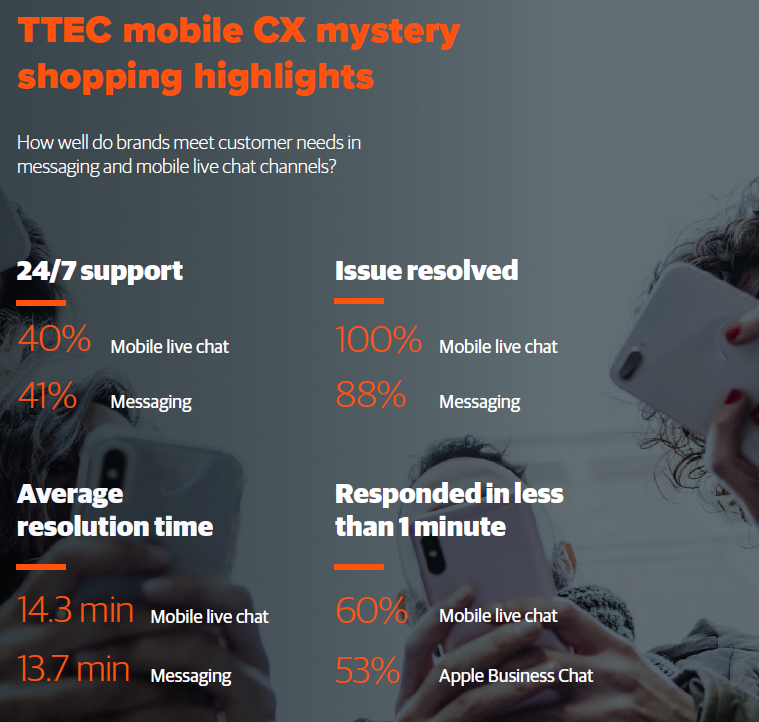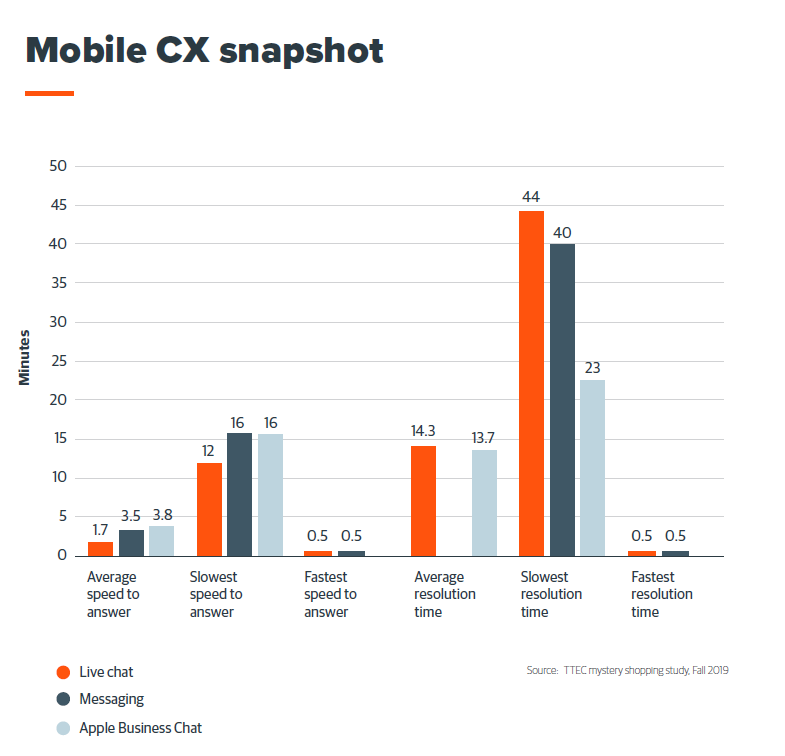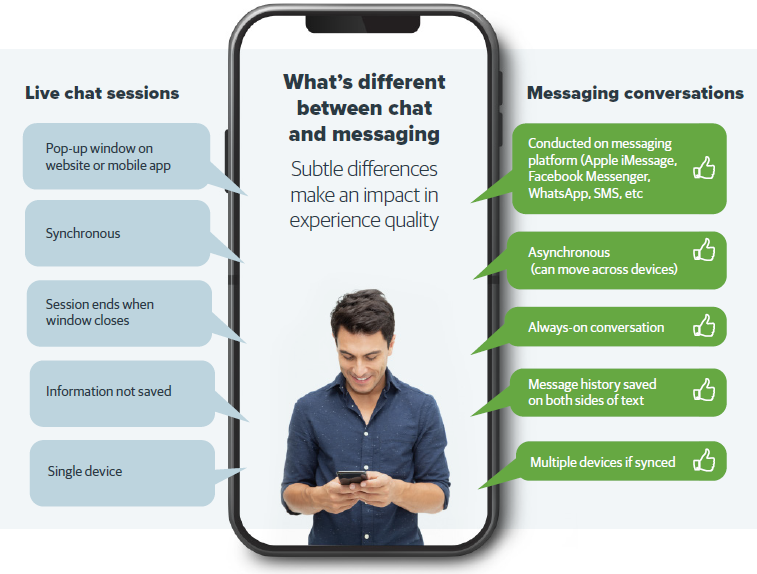When customers reach out to a brand with sales or customer service questions, they increasingly do it from their mobile devices. Whether it be voice, chat or SMS messaging, digital-first mobile customer interactions are growing fast.
Insights from FacebookIQ found that 65 percent of millennials and GenXers prefer to message rather than call or email, followed closely by 63 percent of Baby Boomers. And that behavior is naturally shifting to business communications. But are companies ready to manage the shift to mobile? The short answer is no.
Research from Lawless Research and Twilio found that seven in 10 businesses surveyed think they are communicating effectively with customers, but only two in 10 consumers surveyed agree. The biggest roadblocks for customers are immediate help and swift resolution of their issues.
We decided to examine for ourselves what a typical mobile customer interaction looks like for consumers today, particularly when it comes to messaging and live chat via mobile phone. TTEC’s research team mystery shopped 27 companies from five different industries over a four-month period:
- E-commerce/retail
- Financial services
- Telecom
- Travel
- Utilities
The researchers asked simple questions like “can I buy an iPhone 11” for telecom companies to “can I book my trip through the app” for travel companies. Of those we researched, 81% offered a live chat option via mobile device, 63% offered some sort of mobile messaging option (SMS, Facebook, or Apple Business Chat), and 56% explicitly offered Apple Business Chat, which allows direct texts with a brand from Apple’s iMessage.
The findings shed light on what a consumer typically experiences today when interacting with a brand via live chat and text messaging on mobile devices*. We found some common practices across industries, as well as some areas that could be improved.


Mobile CX trends: What we observed
1. Human interactions remain essential.
Even in a digital environment, all 27 firms connected us to human associates to assist with our questions in both the live chat and messaging platforms. Prior to connecting to a person, however, two companies required at least five specific form fields for us to answer, which slowed down the process of reaching an associate and getting a response.
2. Be available when customers need you.
Less than half of the companies investigated (40% of mobile live chat and 41% of messaging platforms) offered 24/7 support. This could be especially frustrating in the mobile environment, where people are on the go and looking for an immediate resolution in the moment they reach out.
3. Resolution times vary.
We asked simple questions like “can I open a savings account” for banks and “do you offer express delivery” for retailers. Four companies (15%) answered our questions in under one minute. But another 15% of companies each took 23 minutes to resolve our questions in Apple Business Chat.
And in one extreme case, a financial services company took 42 minutes to resolve an issue via Apple Business Chat. It took 16 minutes to engage the customer’s initial request about opening a savings account, followed by a 7-minute response time to each follow-up question. The conversation ended with a generic link to open a savings account, even though in the conversation the associate said we did not qualify to open one. It was a poor experience that left us dissatisfied.
4. Live chat dominates.
More companies offered mobile live chat options than they did messaging. What’s more, 100% of live chat interactions were resolved, compared to 88% for messaging platform conversations. This likely means that the processes, associate training, and knowledgebases may be more mature in the live chat setting than nascent messaging.
5. Make it easy to find.
Most mobile CX options were easy to find. It took an average of 3 clicks from the homepage to access live chat, and 2 clicks to find messaging options for those who offered it. On the plus side, some sites had links on every page to encourage live chat or messaging. However, a few brands buried their digital options deep into their sites, with more than 5 clicks to reach them. And in one case we could only reach the mobile live chat option through a Google search that routed us directly to the chat function.

Mobile CX’s future lies in messaging
When it comes to the mobile customer experience, messaging will continue to grow as a preferred channel, as tools like Apple Business Chat are embedded seamlessly into everyday mobile activities like web searches and texting.
Why? Because messaging provides many benefits for both companies and customers. Simply put, customers like it better than more traditional live chat on mobile. It’s more intuitive, personal and emoji-friendly. In fact, more than 50% of customers prefer contacting support through messaging compared to other channels, according to Smallbizdaily.
On the brand side, organizations see higher customer satisfaction ratings for messaging-based conversations than other support channels, according to Helpshift. Average CSAT scores were 4.1 for messaging, 3.6 for live chat, 3.3 for email, and 3.0 for web forms.
The move to messaging as a primary interaction channel is a crucial step in the transformation of brands to truly meet customers where they are and where they want to be. However, it does require a different way of working compared to mobile live chat, voice calls, or email. Agent skills such as tech savviness, comfort with informal language and emoji-driven shorthand, typing speed, and ability to improvise and solve problems quickly are highly desirable for messaging interactions.
The bottom line from the research can be summed up as follows: Mobile experiences are typical customer experiences. But they need to be better.
*The findings of this report are not statistically significant.

